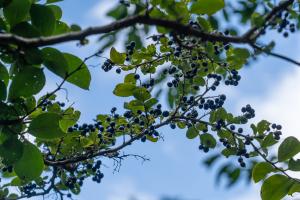Where to Plant Bay Tree
Bay trees, also known as Laurus Nobilis, are evergreen trees that are widely used for culinary purposes. They are common in Mediterranean regions and can grow up to 12 meters tall. If you are planning on growing a bay tree, it is important to choose the right location for it to thrive. Here are some tips on where to plant your bay tree:
1. Climate and Location
Bay trees grow best in climates with mild winters and hot, dry summers. They do well in areas with full sun exposure, but also tolerate partial shade. When it comes to soil, bay trees prefer well-draining soil that is rich in organic matter. If you live in a colder climate, it is recommended that you grow your bay tree in a container so that you can move it indoors in the winter months.
2. Space Requirements
Bay trees require ample space to grow and mature. When planting a bay tree, it is important to leave enough room for it to spread out without being overcrowded. This will ensure that the tree gets enough sunlight and nutrients to grow properly. Ideally, a mature bay tree should have a space of at least 6 feet in diameter around it.
3. Wind Protection
Bay trees are sensitive to strong winds, which can damage their leaves and branches. It is important to choose a location for your bay tree that is protected from strong winds. You can plant your bay tree near a wall or fence to create a wind barrier or use a windbreak to shield the tree from strong gusts of wind.
4. Pests and Diseases
Bay trees are susceptible to various pests and diseases, such as scales, aphids, and fungal infections. To prevent your bay tree from becoming infected, it is important to regularly inspect it for signs of damage and promptly treat any problems that arise. You can also use natural insecticides and fungicides to protect your tree against pests and diseases.
5. Companion Planting
Companion planting is a technique that involves growing different plants together to create a mutually beneficial environment. When choosing a location for your bay tree, consider companion planting with other plants that can provide shade, attract beneficial insects, or repel pests. Some popular companion plants for bay trees include lavender, rosemary, and marigolds.
Conclusion
Bay trees are beautiful and useful trees that can be grown in a variety of locations. When choosing a location for your bay tree, consider the climate, space requirements, wind protection, pests and diseases, and companion planting. By taking these factors into account, you can create an optimal environment for your bay tree to thrive and provide you with fresh bay leaves for your culinary creations.

 how many times do yo...
how many times do yo... how many planted tre...
how many planted tre... how many pine trees ...
how many pine trees ... how many pecan trees...
how many pecan trees... how many plants comp...
how many plants comp... how many plants can ...
how many plants can ... how many plants and ...
how many plants and ... how many pepper plan...
how many pepper plan...































